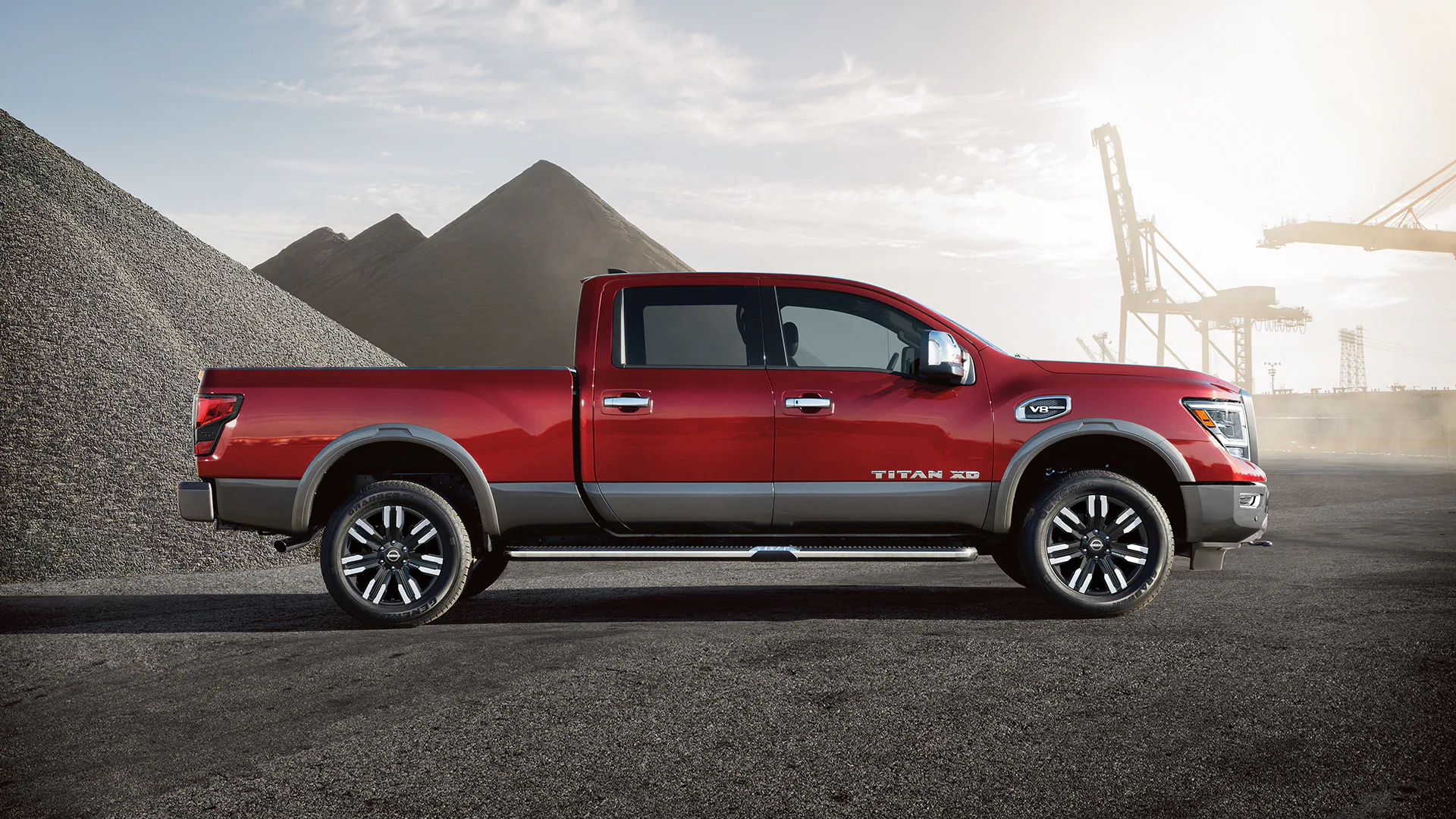For many gearheads with a passion for utilitarian vehicles, owning a pickup truck is a dream come true.
These rugged machines are built to handle tough terrain and have served as the foundation for other off-road capable 4x4s, including SUVs.
Much like their closely related counterparts, pickup trucks often come with a hefty price tag and can be costly to maintain over time.
Trucks With Cheap Part Replacements
When it comes to owning a truck, one of the most important factors to consider is the cost of maintaining it over time. From engine parts to brakes and everything in between, the price of replacements can quickly add up. Fortunately, some trucks are built with affordability in mind, making part replacements more budget-friendly.
In this article, we’ll explore trucks that are known for having cheap and easily accessible replacement parts, helping you save money in the long run without compromising on performance. If you’re looking for a reliable, cost-effective vehicle, these trucks might just be the perfect fit.
Nissan Frontier
The 2019 Nissan Frontier stands out as one of the most affordable trucks to maintain.
What makes it particularly budget-friendly is its simplicity there’s an absence of high-cost features and advanced technology that often drive up maintenance and repair expenses, especially when it comes to the entry-level Frontier.
Power door locks, power mirrors, air conditioning, and power windows are available as optional features in the Nissan Frontier.
Unlike many other trucks in its class, Nissan does not include costly driver assistance technologies that are often expensive to repair.
The only standard feature is the rearview camera. Despite this minimalism, the Frontier remains a highly capable truck that’s ready for off-road adventures without the concern of steep repair costs.
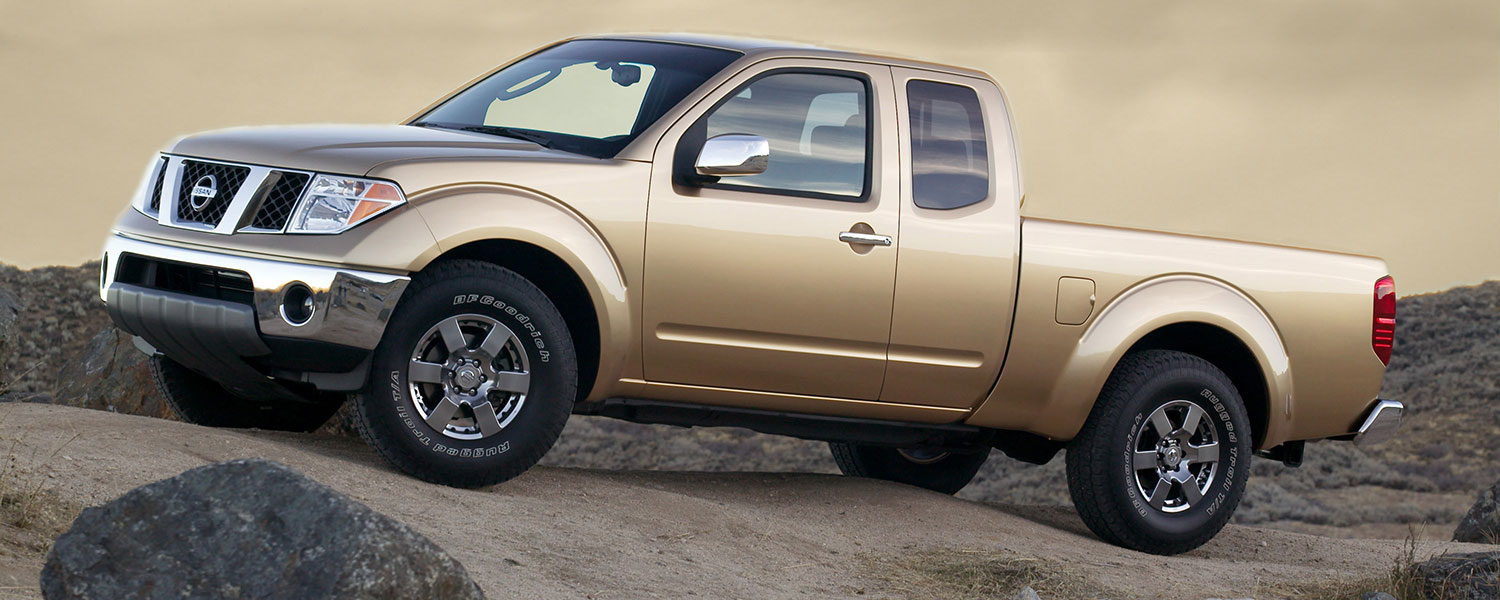
The upcoming Nissan Frontier pickup is set to offer a hybrid option in the future, with the possibility of being merged with Nissan’s midsize truck model that is sold in Latin America, Asia, and other global markets.
Currently, the Frontier remains available in North America, where it competes against other popular midsize pickups like the Ford Ranger, Toyota Tacoma, and Chevrolet Colorado, all of which have seen complete redesigns in recent years.
For the 2025 model year, the Frontier has received a midcycle refresh, featuring an updated exterior design, enhanced towing capacity, and a reworked interior with a larger touchscreen, a telescoping steering wheel, and wireless Apple CarPlay/Android Auto. It’s available in both the two-door King Cab and the four-door Crew Cab configurations, with the current generation of the Frontier dating back to 2022.
The current 3.8-liter V6 engine, producing 310 horsepower and 281 lb-ft of torque, is powerful but inefficient, offering fuel economy of just 16-19 mpg in the city and 20-24 mpg on the highway.
While this engine allows the Frontier to reach 60 mph in 7.6 to 7.9 seconds, the addition of a hybrid powertrain would enhance fuel efficiency and overall performance. Nissan expects to have a solution in place by around 2028, with Pandikuthira stating, “We need to have a solution by then. Three years from now.”
In addition to the Frontier, Nissan currently offers a separate midsize pickup, the Nissan Navara, for global markets outside North America. The Frontier is built in Canton, Mississippi, and benefits from fewer import duties than competing trucks made in Mexico.
Additionally, the Nissan Titan, a full-size pickup, was discontinued after the 2024 model year, further highlighting Nissan’s focus on refining and expanding its midsize truck offerings.
Also Read: Top Engines That Outlived the Brands That Made Them
Nissan Titan
The 2019 Nissan Titan ranks as the most affordable full-size truck to maintain. Still, some critics claim that the brand lags behind in terms of overall reliability.
The Titan offers high-tech features that aren’t even available in the Toyota Tundra. These include Android Auto and Apple CarPlay as standard. None of these technologies is offered by Toyota.
Another highlight of the Titan is its reputation for having one of the longest warranties in the automotive industry, helping to shield owners from unexpected repair costs.
According to Nissan, the Titan is backed by a bumper-to-bumper warranty lasting five years or 100,000 miles.
The first-generation Nissan Titan, which launched in 2005, sold nearly 87,000 units in the USA, but its sales have significantly dwindled over the years.

In 2023, fewer than 20,000 units of the second-generation Titan were sold. Given this decline, it’s not surprising that Nissan has decided to end its foray into the full-size truck market in North America, ceasing production of the Titan by the summer of 2024.
In comparison, the Ford F-150 sold nearly three-quarters of a million units last year, and even the Toyota Tundra, which doesn’t rival the top three full-size trucks from Ford, GM, and RAM, sold more than 125,000 units.
The Titan’s struggles are compounded by the fact that it is an aging vehicle—an eight-year-old truck at this point. It offers limited options with only one engine and two body styles, and it falls short of its competitors in areas like towing capacity and modern tech features.
While its 400-horsepower V8 engine delivers strong performance, the Titan’s poor gas mileage and lack of significant updates make the 2024 model unlikely to make much of an impact before it disappears from the market.
The 2024 Titan represents the truck’s final model year, and as such, it doesn’t receive many updates. The base S trim has been discontinued, so the SV trim now serves as the entry-level model, raising the starting price by nearly $6,000. In a bid to make the SV’s price more palatable, the previously standard Convenience package is now an optional add-on.
A new Bronze Edition appearance package is available, which adds blacked-out trim and various bronze exterior and interior enhancements, including 20-inch alloys and cabin trim pieces. This package is only available for the SV trim.
As for pricing, the 2024 Nissan Titan SV Crew Cab starts at $46,040, with the SV King Cab priced at \$49,410, the Pro-4X Crew Cab at $53,850, and the Platinum Reserve Crew Cab at $59,710.
While the SV King Cab and Pro-4X Crew Cab come with four-wheel drive by default, the other trims are two-wheel drive, and upgrading to 4WD costs an additional $3,190 for the lower trims and $3,310 for the Platinum Reserve.
The Midnight Edition and Bronze Edition packages are available for the SV, costing 1,990 and 2,980, respectively. These prices reflect the MSRP and exclude Nissan’s $2,010 destination fee.
Choosing the right Titan trim will depend on your specific needs. If you’re looking for a basic, work-oriented truck, the Titan no longer offers a base model, so it might be worth considering other brands for a better deal.
The Pro-4X trim is ideal for those seeking off-road capability and upgraded equipment, while the Platinum Reserve offers the most luxurious trim. However, given the aging design of the Titan and its high price, it might be hard to justify opting for this model in the $60,000 range when competitors offer more modern options.
Also Read: 10 SUVs That Are Overbuilt in the Best Way Possible With Power, Luxury, and Road Dominance
Ram 1500
Fiat Chrysler may not be known for having the strongest reputation for reliability. However, the 2019 Ram 1500 tells a different story.
This full-size half-ton pickup truck from the company is relatively inexpensive to maintain. In 2019, Fiat gave the Ram 1500 a complete redesign, though it still shared certain specifications with the Chevrolet Silverado.
The Ram 1500 features a standard light-hybrid powertrain that enhances fuel economy. In 2019, it also stood out as the only truck in its segment to offer air suspension.
Additional tech features the Ram 1500 boasts include automatic emergency braking, mobile Wi-Fi, and a Harman Kardon audio system.
Every gasoline-powered version of the 2025 Ram 1500 comes equipped with an eight-speed automatic transmission. Rear-wheel drive (RWD) is standard for most models, with four-wheel drive (4WD) available across the entire lineup.
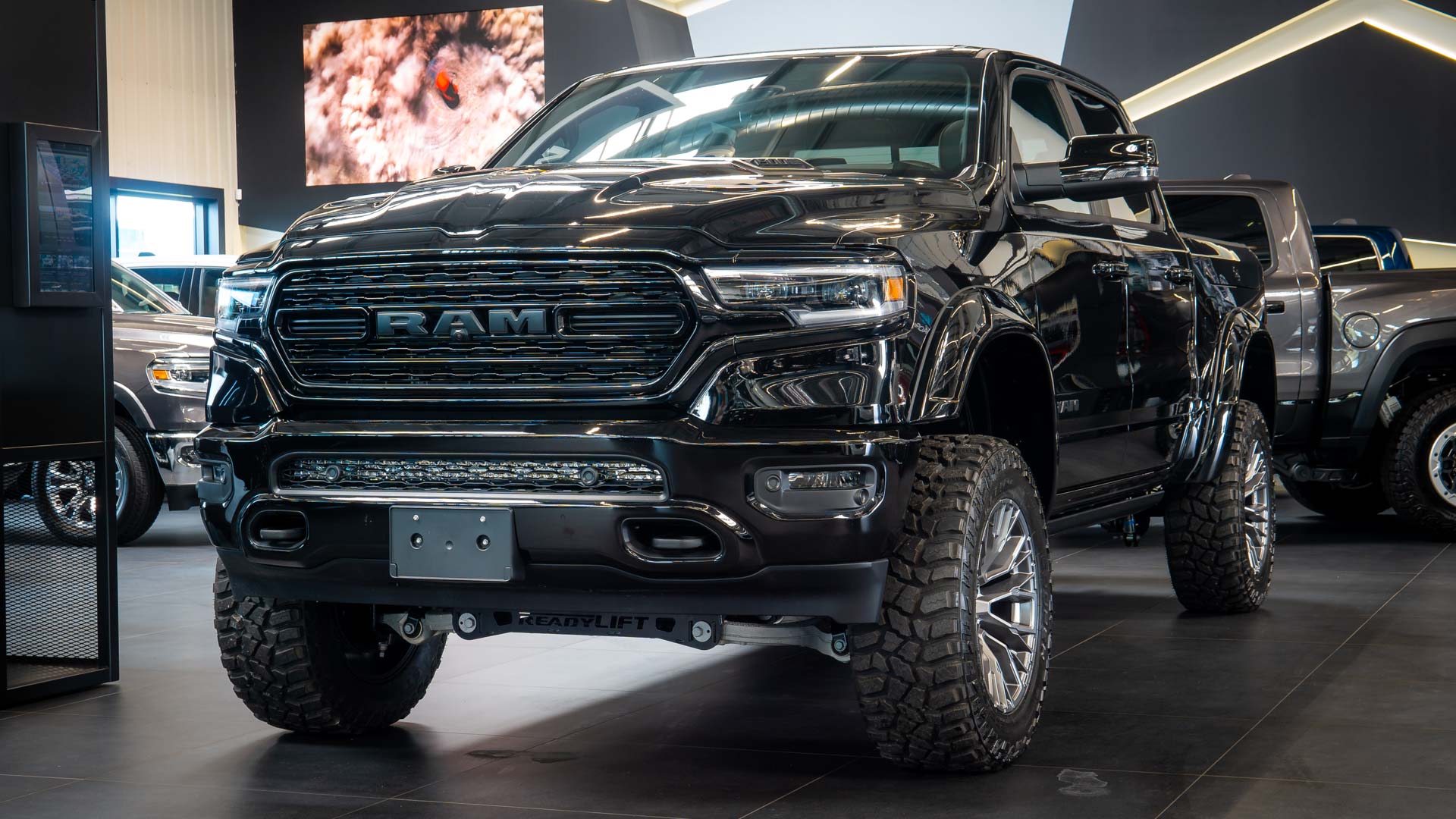
The base 3.6-liter V-6 engine benefits from mild hybrid assistance, using a belt-driven motor generator unit that charges a 48-volt battery, offering smoother start/stop functionality and additional low-rpm torque. This engine delivers 305 horsepower and 271 lb-ft of torque.
For many buyers, the two available 3.0-liter twin-turbocharged inline-six engines are more appealing. Ram refers to these engines as the Hurricane Standard Output and Hurricane High Output
. The Standard Output version produces 420 horsepower and 469 lb-ft of torque, while the High Output version generates 540 horsepower and 521 lb-ft of torque. Ram claims that the 2025 Ram 1500 can tow up to 11,580 pounds and has a maximum payload capacity of 2,300 pounds.
Most 2025 Ram 1500 models achieve a fuel economy range of 17-20 mpg in the city and 24-26 mpg on the highway. However, the High Output models have slightly lower efficiency, returning 14-15 mpg in the city and 16-21 mpg on the highway.
For years, enthusiasts have been hoping for a hybrid version of the Ram 1500, and with the 2025 model, Ram has delivered. The new Ramcharger is a plug-in hybrid that is built on the Stellantis STLA Frame EV platform.
This hybrid truck is unconventional in its setup, using a 3.6-liter V-6 engine that powers a 130-kW generator. The generator can either charge the truck’s 92-kWh battery or send power to the wheels through front and rear electric drive modules (EDMs).
These modules, which combine a motor, gearbox, and inverter, work together to provide all-wheel drive. With a total output of 663 horsepower and 615 lb-ft of torque, the Ramcharger can accelerate from 0 to 60 mph in just 4.4 seconds. For more details on the 2025 Ram 1500 Ramcharger, click here.
For 2025, Ram introduces the off-road-oriented Ram 1500 RHO. This model is equipped with the higher-performance version of the Hurricane High Output 3.0-liter twin-turbocharged inline-six engine.
It accelerates from 0 to 60 mph in just 4.6 seconds and reaches 100 mph in 12.3 seconds. The RHO completes the quarter mile in 13.2 seconds at a speed of 102.7 mph, with a top speed of 118 mph.
Maximum towing capacity for the RHO is 8,380 pounds, while its payload capacity is 1,520 pounds. The RHO is also capable of fording water up to 32 inches deep and features a ground clearance of 11.8 inches, thanks to a 2.0-inch ride height increase and 35-inch tires mounted on 18-inch wheels.
Ram outfits the 1500 RHO with advanced off-road technology, including a high-flow air induction system, a radial air filter in an open-top airbox for easy cleaning, a low-restriction sport exhaust, and a BorgWarner 48-13 full-time active transfer case.
The truck features a 2.64:1 low-range gear ratio for rock crawling and can be flat-towed while in neutral. Various drive modes are available, such as Auto, Tow, Mud/Sand, Rock, Snow, Sport, Baja, Custom, and Valet, and drivers can activate launch control with a button on the dashboard.
The RHO’s suspension system is designed for long travel with adaptive damping, inspired by off-road desert racing. It includes an independent front setup and a rear five-link coil system.
The RHO also boasts several cosmetic updates, including a larger Ram badge with a flow-through design, more prominent badging on the tailgate, front and rear tow hooks, five-inch dual exhaust tips, black LED headlights, LED clearance marker lights, a functional hood scoop, and animated signature lighting.
Inside, the RHO features a VIN-specific center console badge, embroidered seatback logos, a unique shifter, aluminum shift paddles, carbon fiber accents, and optional red trim.
The truck’s audio system is provided by a 19-speaker Harman Kardon setup. The RHO is equipped with 12-way power leather front seats with memory settings and massaging functionality. All seats are heated and ventilated, and are upholstered in leather with perforated suede accents.
Toyota Tacoma
The 2019 Toyota Tacoma is a favorite among many gearheads looking for the most affordable pickup trucks to maintain.
The Toyota Tacoma boasts outstanding scores when it comes to overall reliability and low maintenance costs. In many cases, it even exceeds Toyota’s long-standing reputation for durability and quality.
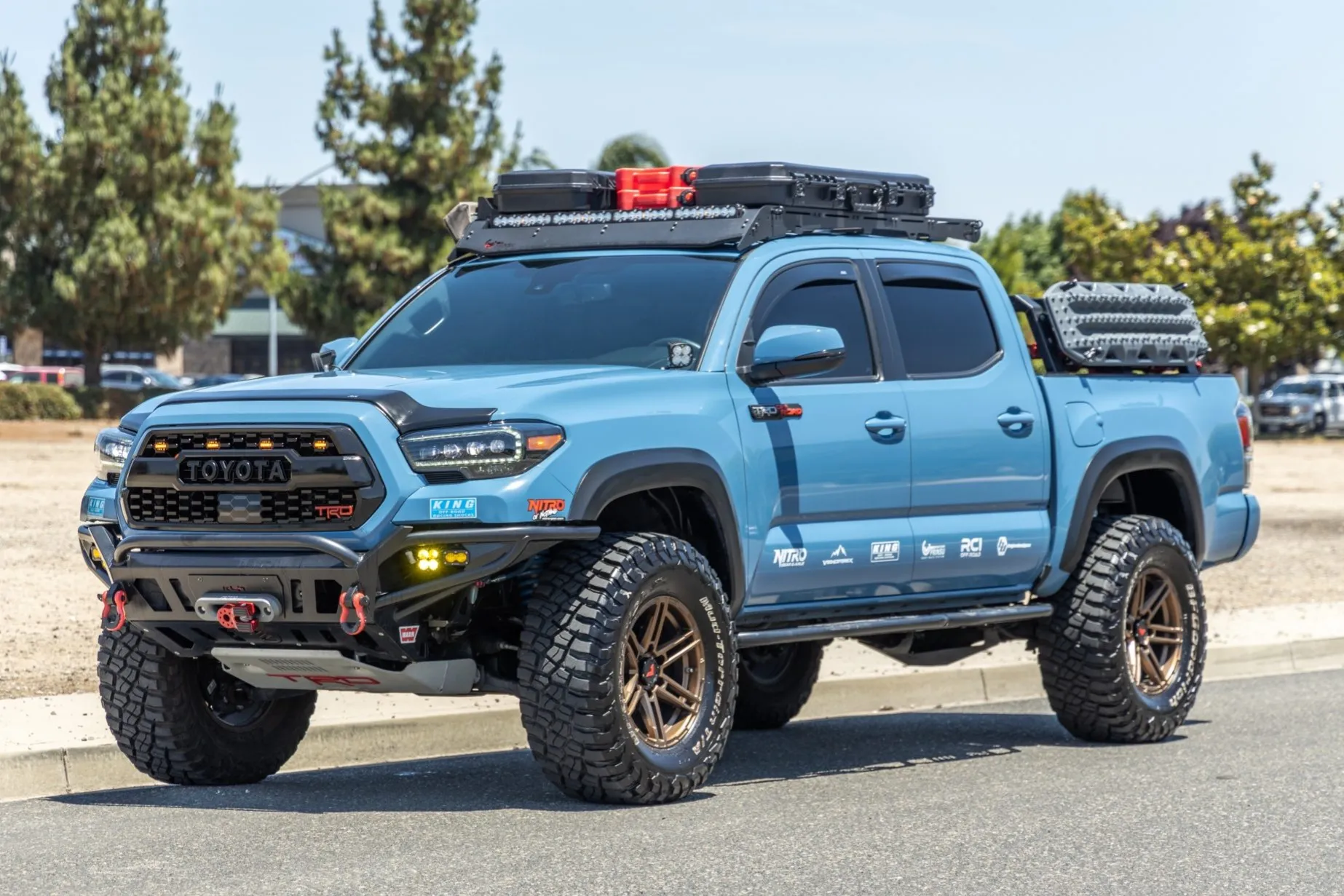
Toyota managed to keep the Tacoma’s maintenance costs low by adopting a strategy often seen in luxury car brands.
Routine maintenance for the model is provided at no cost for the first two years or 25,000 miles.
Additionally, every Tacoma is equipped with a range of advanced safety features designed to give drivers greater confidence on the road.
Toyota Tundra
Finding non-American full-size pickup trucks that can match their American counterparts in terms of reliability, capability, technology, or luxury is no easy task.
However, many of them are among the cheapest to maintain. This is exactly the case with the 2019 Toyota Tundra.The Toyota Tundra is known for its exceptional reliability.
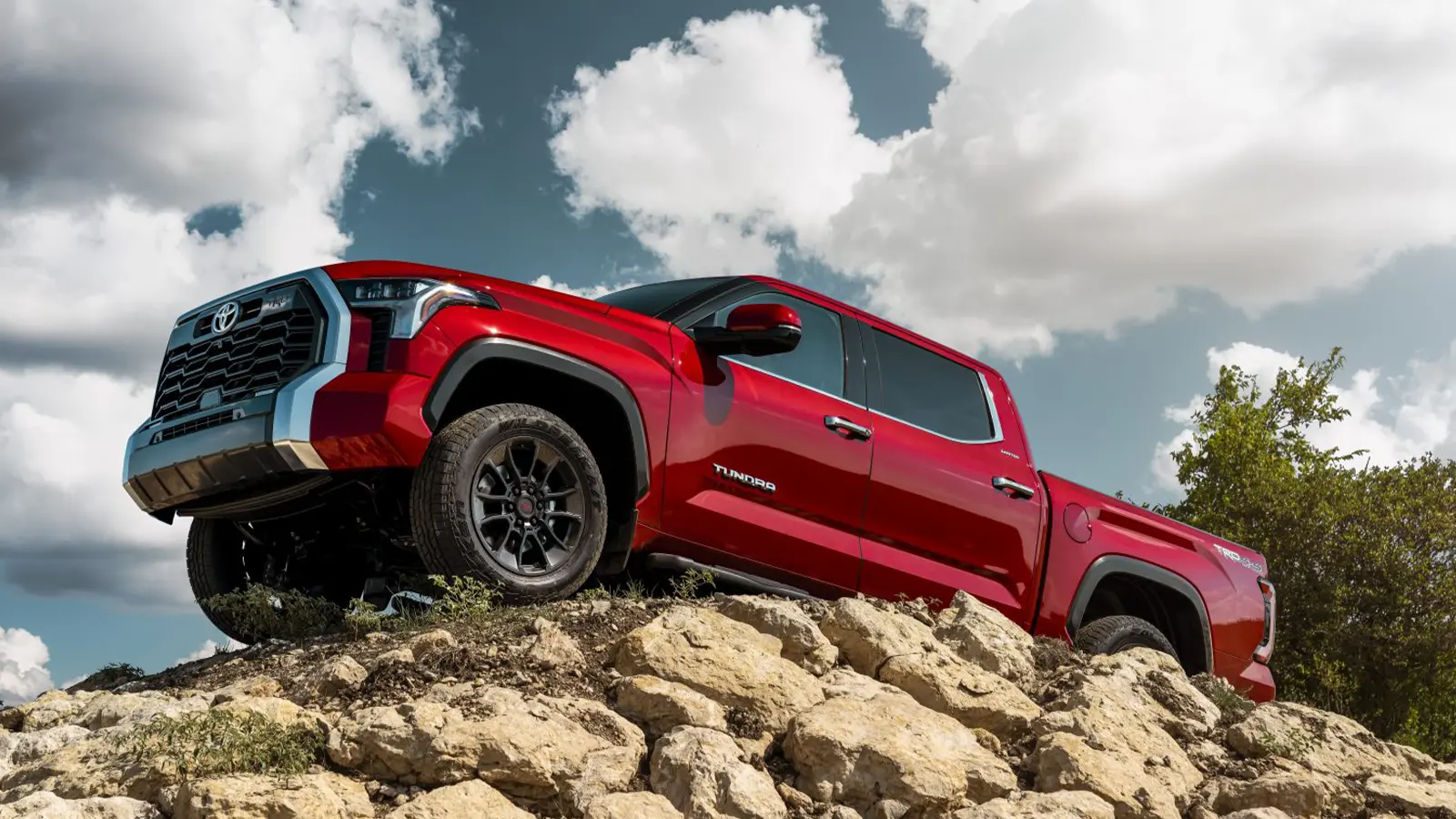
Its low maintenance costs are especially impressive considering the wide array of safety features it offers compared to other trucks in its class and even other types of vehicles.
Every Tundra comes equipped with adaptive cruise control, a forward-collision warning, automatic forward emergency braking, automatic high beams, a lane-departure warning, and a rearview camera.
Also Read: 10 Chevrolet Trucks With Durable Frames That Will Last A Long Time
Trucks You Hate To Spend Money on Maintenance
When buying a truck, there are several important factors to think about beyond just the initial sticker price. One key consideration is maintenance costs.
Trucks that are unreliable and come with costly repairs can end up draining thousands of dollars from their owners over time.
Because of this, they may not always be the most financially sound choices for vehicle buyers.
Honda Ridgeline
Over the first ten years of ownership, the Honda Ridgeline will cost approximately $8,557 to maintain. That’s $1,548 less than what the average pickup truck owner can expect to pay.
During that same time frame, the Honda Ridgeline has a 24.23% probability of needing major repairs. This makes it 4.51% less likely to require significant repairs compared to the average pickup truck.
The 2025 Honda Ridgeline returns unchanged from its 2024 model, maintaining its appeal as a comfortable and fuel-efficient alternative to traditional body-on-frame pickups in the mid-size truck segment. The starting price for the 2025 Ridgeline is $41,600, with the price rising up to $48,200 depending on the chosen trim and options.
The available trims include the Sport at $41,600, the recommended RTL at $44,430, the TrailSport at $46,830, and the Black Edition at $48,200. While the mid-size truck market is crowded with vehicles that offer heavy towing and off-roading capabilities, the Ridgeline stands out for those seeking a more family-friendly, fuel-efficient option.
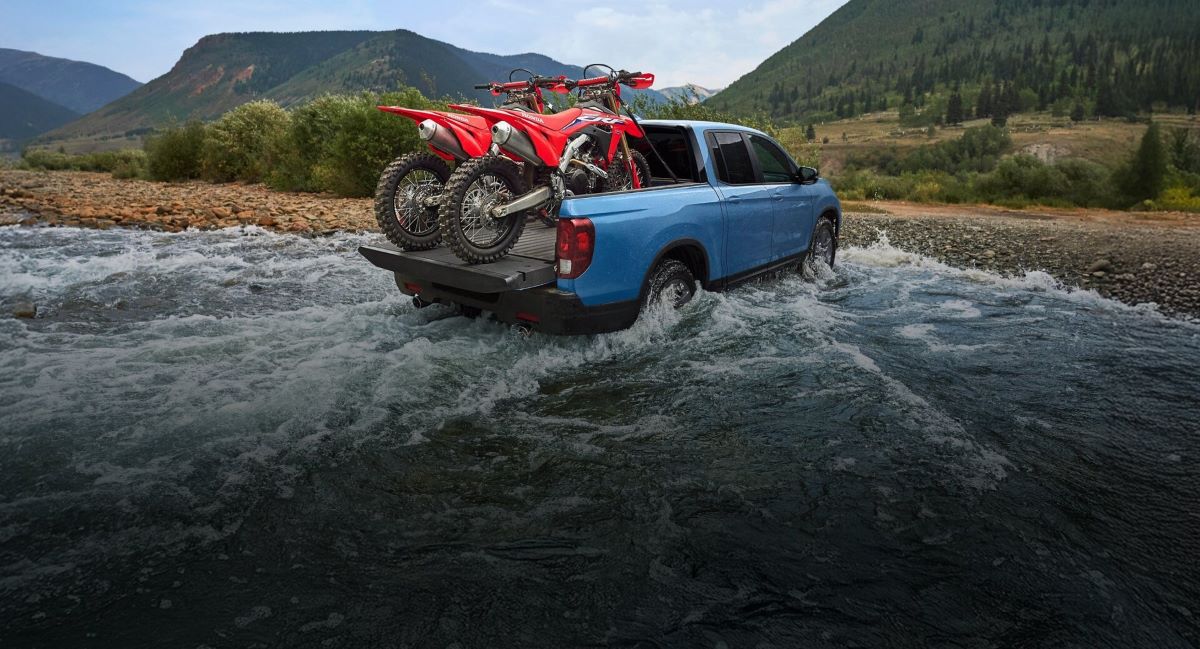
Among the various trims, the RTL offers the best combination of features and value, as it comes with heated front seats, a leather-trimmed interior, power-adjustable front seats, and a power-sliding rear window.
Under the hood, the Ridgeline is powered by a 280-horsepower 3.5-liter V-6 engine, which produces 262 lb-ft of torque and is paired with a nine-speed automatic transmission and standard all-wheel drive.
The engine delivers smooth and responsive acceleration, making the Ridgeline feel more like a family crossover than a traditional pickup
. Its coil-sprung independent rear suspension gives the truck a car-like ride quality, which sets it apart from competitors that use the more traditional leaf-sprung, solid-axle setups, such as those found in Chevy, GMC, Jeep, and Ford trucks. The Ridgeline’s handling is impressive, with minimal body lean in corners, and it easily absorbs small bumps in the road.
Even the TrailSport model, which comes equipped with knobby General Grabber all-terrain tires, maintains a quiet ride. Interestingly, these tires did not hinder the Ridgeline’s performance on the skidpad and actually improved braking, further enhancing its overall driving experience.
GMC Sierra 1500
Chevrolet Colorado
Owning a Chevrolet Colorado involves maintenance costs that are $263 higher than the industry average. Over the course of its first ten years on the road, maintenance expenses are expected to total approximately \$10,368.
Additionally, there is a 29.99% probability that the vehicle will need major repairs within its first decade, which is 1.25% more likely compared to other vehicles.
The Chevrolet Colorado has established itself as one of the most successful vehicles in our Of the Year programs. The previous generation of this midsize pickup earned our highest truck honors twice, and the current model was named our 2024 Truck of the Year.
Unless you regularly need to tow over 8,000 pounds or carry more than 1,600 pounds in the bed, the Colorado stands out as one of the most likable trucks in its class. The Colorado competes with other midsize pickups, including the Toyota Tacoma, Ford Ranger, and GMC Canyon.
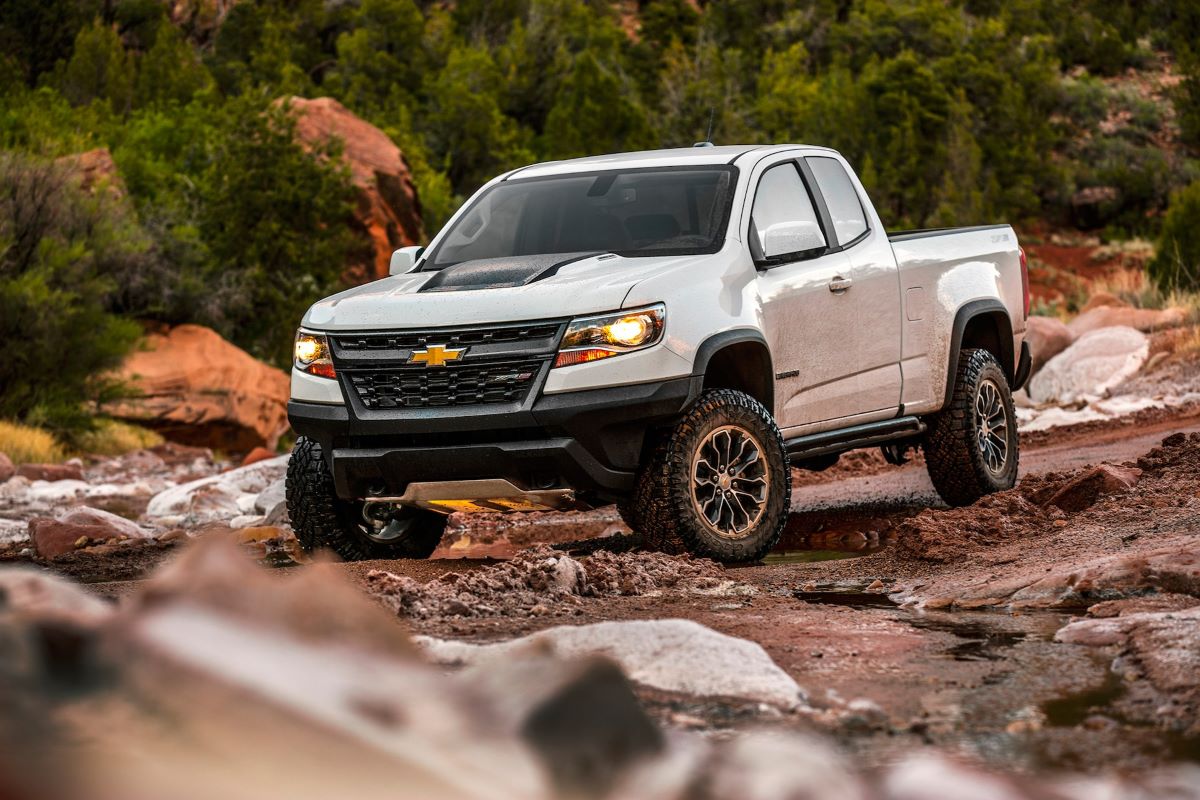
Chevrolet introduced a fully redesigned Colorado in 2023, offering new styling, enhanced powertrains, a more refined interior, and the addition of the burly ZR2 Bison.
Additionally, the 11.3-inch digital instrument cluster became standard. For 2025, Chevrolet has discontinued the entry-level LR2 Turbo engine, leaving the L3B TurboMax as the sole available powertrain option.
Following up on a Truck of the Year winner comes with high expectations, and the 2024 Colorado lived up to them. We were so impressed with the third-generation Colorado that we named it our 2024 Truck of the Year.
After driving it, we were especially impressed with the new turbocharged four-cylinder engine options, which deliver impressive torque and refinement, even when generating 430 lb-ft of torque. The Colorado’s handling is another highlight, with the truck navigating twisty roads with the composure of a smaller, lighter vehicle.
Even the base LT trim is comfortable and well-equipped, although we did notice some quality concerns with early builds, and we would have preferred a low-range transfer case.
Nevertheless, every Colorado variant, particularly the Trail Boss, Z71, and ZR2 models, offers impressive off-road capability. In a comparison with its closest competitors, the Jeep Gladiator Mojave X and Toyota Tacoma TRD Pro, the Colorado ZR2 Bison emerged victorious.
While cabin quality is generally good, we would appreciate a more generously sized rear seat. Some inexpensive materials are visible upon close inspection, but overall, the Colorado hides its cost-saving elements effectively.
We were particularly impressed with the large infotainment screen and the standard digital instrument cluster. Overall, the 2025 Chevrolet Colorado is a modern, comfortable, and capable pickup, earning its place among the best trucks in the market.
In terms of performance, unlike its predecessor, every 2025 Colorado is powered by a 2.7-liter turbocharged four-cylinder engine paired with an eight-speed automatic transmission. RWD is standard on most trims, with 4WD available for an additional cost.
Previously, the entry-level WT and LT trims used a lower-powered version of the turbo-four, producing 237 hp and 259 lb-ft of torque. However, for 2025, every Colorado now comes with the TurboMax engine, which produces 310 hp and 430 lb-ft of torque.
RWD models achieve fuel economy ratings of 19/23 mpg city/highway, while 4WD models see a slight decrease to around 17/21 mpg (with the ZR2 model achieving as low as 16/16 mpg). We tested the Colorado’s 0-60 mph acceleration, which ranged between 6.0 and 6.9 seconds, depending on the trim.
Safety features on the 2025 Colorado include standard automatic emergency braking, lane-keep assist, and automatic high beams. More advanced driver assistance features, such as blind-spot monitoring, rear cross-traffic alert, rear emergency braking, and adaptive cruise control, are available across all trims as part of various option packages.
When it comes to bed length and interior room, the Colorado only offers one configuration: a double cab with a 5-foot, 2-inch bed. While this is slightly longer than the Toyota Tacoma’s 5-foot bed, Toyota also offers a 6-foot bed option and a single cab for those who need it.
The Colorado does have a significant advantage over the Tacoma in terms of interior space, making it a more spacious choice for passengers.
GMC Canyon
Over the course of its first ten years, the GMC Canyon will require about $9,201 in maintenance costs. This is $904 less than the average maintenance expense for pickup trucks in the industry.
The GMC Canyon has a 26.25% chance of needing major repairs during that timeframe, making it 2.49% less likely to require significant maintenance compared to the average pickup truck.
The 2025 GMC Canyon stands out with strong performance, making it a compelling option for both work-related duties and weekend adventures. Though its interior lacks the refinement seen in some rivals, the truck compensates with practicality and an array of useful features.
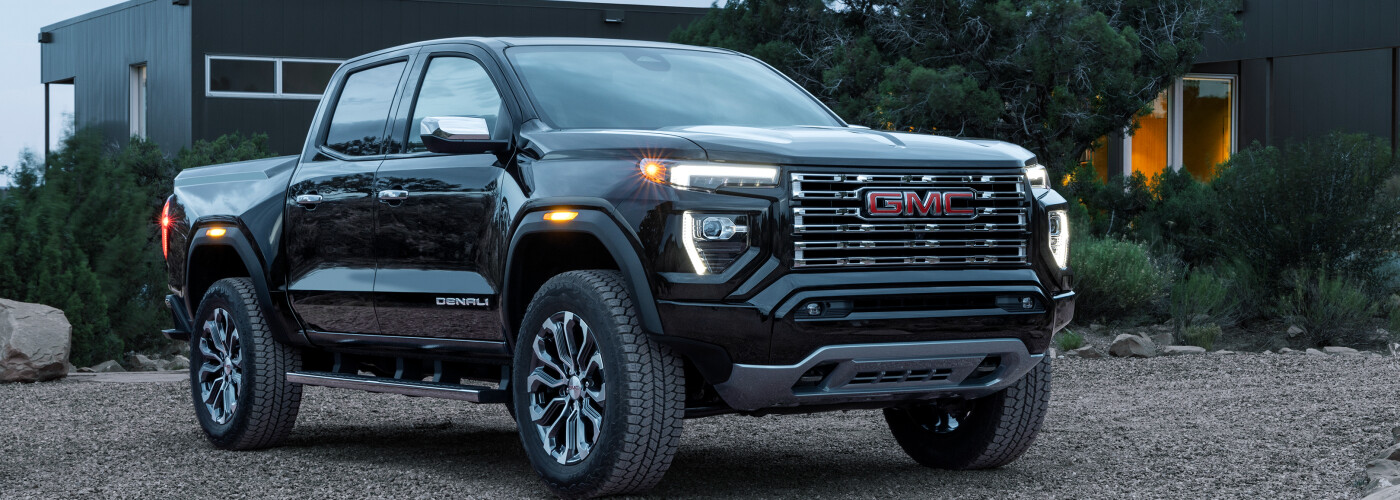
These qualities help it remain a solid contender in the compact pickup segment. Among its strengths are composed handling, impressive towing and off-road capabilities, versatile cargo solutions, and a cabin equipped with modern technology.
However, drawbacks include the absence of a diesel engine option, subpar fuel economy compared to the class average, cramped rear seating, and infotainment menus that may prove too complex for some users.
For 2025, the Canyon lineup has been streamlined. The AT4X and AT4X AEV trims have been converted into optional packages for the AT4 model, and a new Nightfall Edition package is now available for the AT4. Additional minor feature adjustments have also been made. The Canyon continues to seat five passengers.
In the midsize pickup truck category, the 2025 Canyon earns a U.S. News score of 8.9 out of 10, tying for second place with the Chevrolet Colorado and Toyota Tacoma, while only trailing the Honda Ridgeline. This rating is derived from an evaluation of 15 research sources and data metrics that encompass various aspects of the truck.
The expert rating is informed by in-depth research, encompassing professional reviews and concrete data on areas such as safety, reliability, fuel efficiency, and cargo space.
This rating is consistently updated as new data becomes available. Currently, the Canyon earns an 8.9 overall, with sub-scores of 8.5 for performance, 8.7 for fuel economy, 6.6 for interior quality, and 8.7 for value. Safety and reliability scores are not yet available.
On the road, the Canyon earns a performance rating of 8.5 out of 10. Its confident handling and well-tuned suspension make it pleasant to drive both on pavement and off-road trails.
Precision steering enhances maneuverability, while firm brakes add confidence in tight situations. Off-road enthusiasts will find value in the AT4X and AT4X AEV packages, which bring upgrades such as locking differentials and enhanced suspension systems to tackle tough terrain.
Nissan Titan XD
Maintaining the Nissan Titan XD over its first 10 years will cost approximately $9,211. This is $894 less than the industry average for pickup trucks.
The truck has a 25.58% chance of needing significant repairs during that time. This rate is 3.16% lower than the average for trucks within its segment.
The concept behind the 2022 Nissan Titan XD—a truck positioned somewhere between a light-duty and heavy-duty pickup—is far more appealing on paper than in execution. It’s essentially a fortified version of the standard half-ton Titan, offering increased towing and payload capacities.
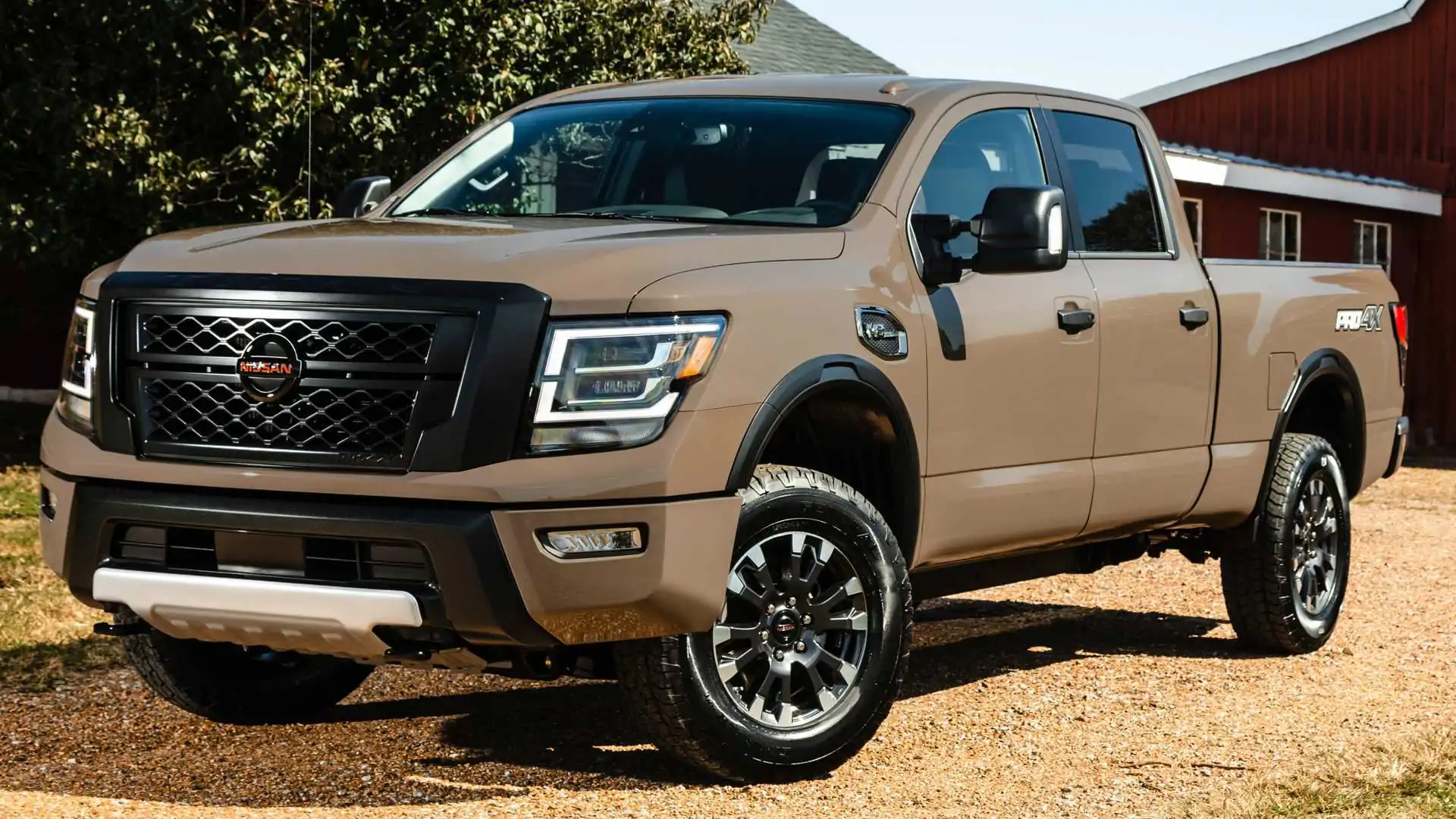
Additionally, it provides a smoother ride compared to heavy-duty models like the Ford Super Duty, Chevrolet Silverado HD, and GMC Sierra HD.
However, the Titan XD’s position in the market is undermined by full-size light-duty trucks such as the Ford F-150 and Ram 1500, which not only match or exceed its capabilities but also offer superior ride quality, handling, and a wider range of configurations.
Nissan limits the Titan XD to a crew cab setup paired with a 400-hp V-8 engine—both strong points, yet insufficient to win over buyers who want greater flexibility. As a result, the 2022 Titan XD finds itself in a segment that lacks clear demand and, ultimately, garners limited attention.

